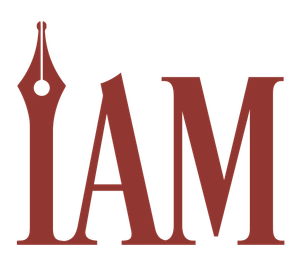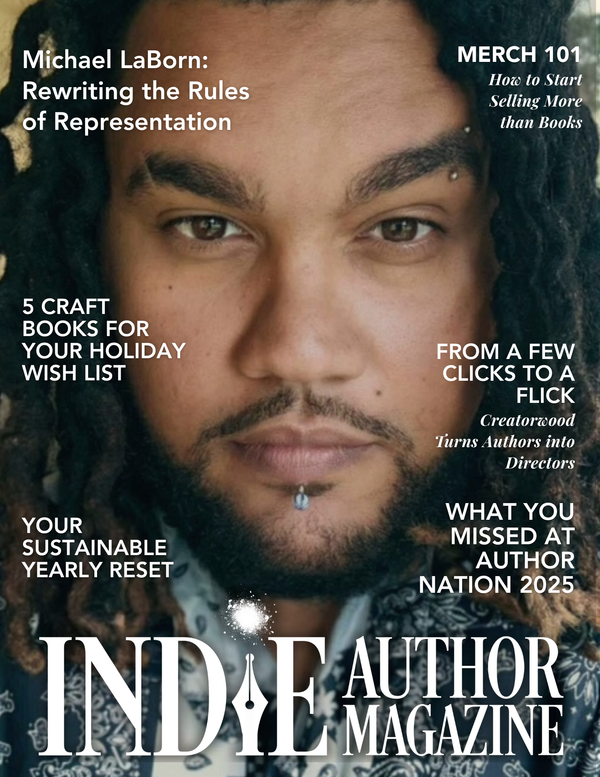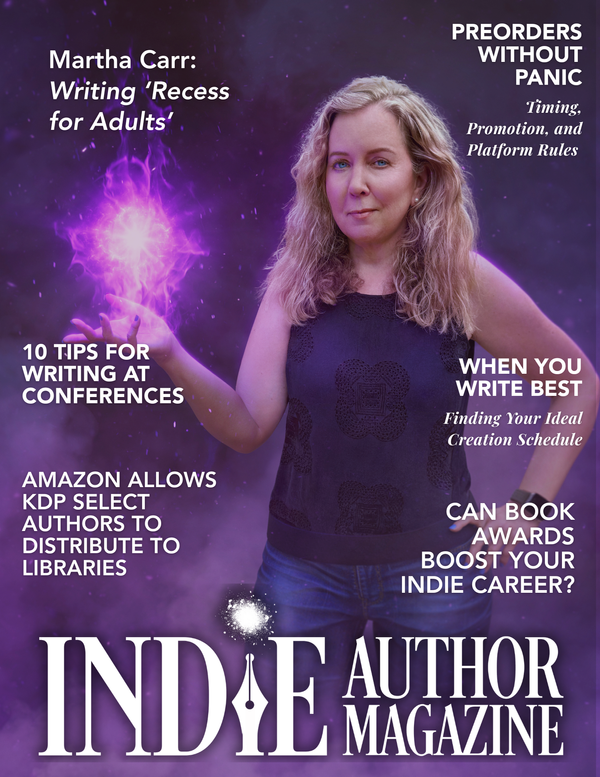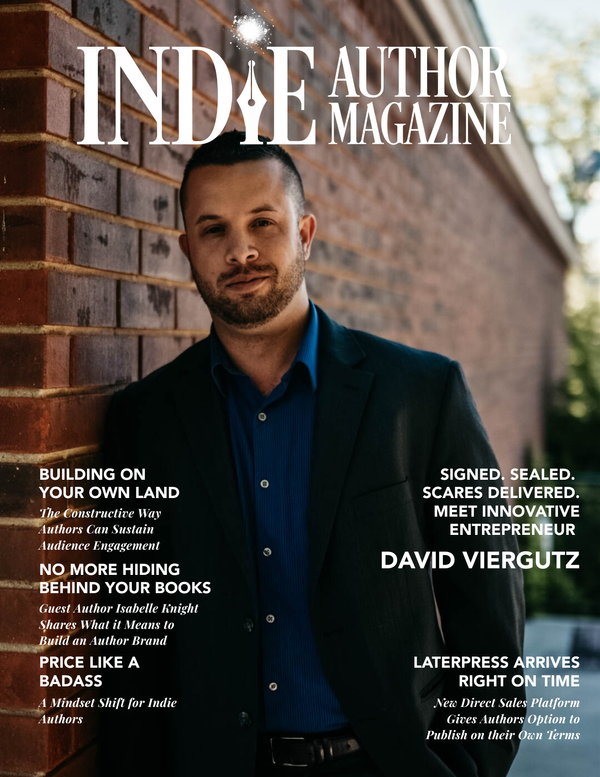Partner Spotlight
|
|
Make the Leap: Turn Writing into a Full-Time Business
Not being ready versus feeling like an imposter
There is a big difference between being unprepared for going full time and feeling like an imposter. Imposter syndrome is natural when you find success in publishing. Indeed, when you’ve done things the indie way and have learned by doing, it can all feel like dumb luck. However, not planning would be choosing to not be ready as best as you could for such a significant life change.
Know this. If you make over $10,000 a year from publishing, you’re in the top 20% of the industry. Of course, that isn’t enough to go full-time, but it gives you a benchmark. If you find that you consistently make five to ten thousand a month from your existing backlist and new releases, you’re now in the rarified air of the top one percent of published authors.
Once you earn your living from your writing, you’ll officially be a professional author. The definition of a professional is someone that makes a living from a particular occupation. What’s even more important is that the marketplace has validated your success. Real people are voting with their wallets that they want you to dedicate more time to writing.
Indie Author Magazine introduces a new section this month with the addition of INSIDER INSIGHTS. We welcome Joe Solari, noted business expert as our inaugural contributor.
Submissions are open on our website at Insider.
If you’re an author who has published enough books to know that you have a readership and earn nearly enough or more than you do at a day job, then there are a few things to consider before you leap into becoming a professional writer. If you’re not at that place yet, then as you read on, imagine how to put processes in place so that you may be ready to go full time sooner.
There are more authors than ever becoming full-time professional writers. I can attest to the growing membership because I work with fourteen authors as their business manager. This group of authors collectively brings in eight million dollars in royalties a year. Only one has a formal education in writing, and all of them started from zero.
Every one of those authors faced the decision to make writing a profession and publishing their business. All of them would tell you it was a scary decision, as they thought the success of their books was a fluke and could end. Even a lousy job seemed to have more certainty than becoming an entrepreneur that sells stories.
Mistakes will be made
Here are the most common issues I’ve observed with authors who leap into full-time writing without a plan.
Squeezed in a cash flow crunch
One of the main reasons high net worth authors engage my services is they suddenly find themselves in a cash flow crunch. The business now has higher employee expenses (you) constraining growth. They continue to grow at the rate they had in the past. Suddenly, they find they are out of cash. A better way to put it is the money they have is supporting them or out on the street working for them. Without a plan, your business will abruptly reset its growth rate, rather than you doing it in a planned way.
Overpaying in taxes or underpaying/not paying taxes
An improperly set up company will cause an inefficient tax situation. Ignorance of growing tax liabilities can lead to underpaying taxes. Both cases can lead to you not having cash for the day-to-day or being surprised by a big tax bill.
Overwhelmed and stressed by business stuff
Remember, I framed this as writing is your profession, and publishing is your business. Indie publishing is a powerful business model that eliminates intermediaries who suck up the value that should go to the reader or writer. In cutting them out, you have more responsibility. Even if you end up outsourcing this work, you’re responsible for seeing it's done right and on time. You’ll always need to be the conductor as you move from a one-man band to an orchestra. This can get stressful without a process.
There are other pitfalls, but these are the most common. So how do you do this differently to sidestep the most common mistakes?
Assess and execute
Below are the four principal areas of investigation. To make this easier and get granular in each area, I’ve created a checklist in Notion. It’s free and doesn’t require any sign-up. (If you are not familiar with Notion, it’s a free productivity software, and you can copy my checklist over to your own account.)
Getting your house in order
In the end, all of this is about you earning a living at writing similar or better than you are now. We need to make sure that your business can support your lifestyle and optimize it as best as possible. You need to have a deep understanding of personal costs and minimize your monthly cash flow needs. Author income has huge swings associated with launches, and the smaller your backlist, the more launches or lack of will affect your monthly income.
Getting your business in order
If you’ve already set up a company, you may need to tidy up some things before leaving your job. If you don’t have a company set up, then you need to have a company chartered where you live. Proper tax structuring, liability protection, and payroll need to be in place.
You also need to review your additional business costs now that you’re responsible for things your current employer may pay for or subsidize.
Transitioning
After reading this, don’t tell your boss to take your job and shove it. Do this on your schedule. There needs to be a transition plan. For example, if part of your strategy is to have penalty-free access to retirement funds as a cushion or working capital (see Runway), you need to have things in place for a seamless transition. You’ll need a solo 401K set up with loan provisions to transfer your company 401K over to before you take a loan. If you leave your company with a loan from your 401K, you’re obligated to pay it back in full or pay the penalty and taxes when you leave your job.
Runway
Some authors find themselves no longer having a day job or can’t wait until the revenues are there to support them. Your publishing business has officially taken off when it can cover its expenses and your living expenses. Until then, it’s taxiing down the runway. Your runway is the savings that must cover the difference between what you need to live and what the business provides.
A quick way to figure out how many months of runway you have is to divide your savings by your monthly living expenses. That will show you the number of months before the runway ends.
If your business doesn’t take off before the runway runs out, it crashes. Think about your runway in two ways. There is the business runway and then your runway. If things are tight on the personal side, you’ll not have any extra cash if the business needs an infusion. To protect yourself, plan the longest runway possible, even if it means waiting to taxi towards full-time writing.
As you work through the checklist, you’ll see there are many facets to explore before you hit the eject button. Go through that list and create a plan to execute over six to nine months.
Making the plan and then executing it is the secret to eliminating the stress and uncertainty that typically comes with this big life decision. Done right, you’ll conclude this was the best choice for your sanity and your family’s prosperity.

Mastering Narrative Viewpoints: Guide for Indie Authors
First Person Point of View
A first person narrator is often the protagonist; reading “I” or “We” in the sentence structure makes that obvious, as does relying on first person pronouns.
First person can provide intimacy and a deeper look into the character’s mind. This limits the story to the perspective abilities of the character, so the reader only knows what the character knows, which means their viewpoint could be biased. This could lead to an unreliable narrator, which may be deliberate or evasive, or the character could simply be naïve.
First person POV is often found in Young Adult, Romance, and Cozy Mysteries, for varying reasons. The intimacy of first person works well in the Young Adult (YA) and Coming of Age genres, where emotional themes such as angst and isolation are at play, with access to the psyches and inner thoughts, and delve the readers into character development.
Many Romance novels put this POV to good use, often featuring scenes from both of the main characters to give an intimate, but fuller perspective.
Cozy Mysteries make readers feel as though they are right there solving the mystery alongside the main character.
Second Person Point of View
Second person POV is less common and is told through the pronoun “You.” It can allow you to draw the reader into the story and make them feel like they are part of the action because the narrator is speaking directly to them. It puts the reader directly in the headspace of a particular character, either the protagonist or a secondary figure.
Second person is the least popular POV because it can require a large suspension of disbelief by the reader. It is more suited to shorter lyrical pieces of writing (like poetry) as it can appear impressive and technically accomplished, but can be used in novel length prose as a means of variety if used for just a portion of the story.
N. K. Jemisin’s Broken Earth trilogy pulls off this voice beautifully as the narrator separates herself from a mother’s grief. The middle grade genre of “Choose Your Own Adventure” novels uses the second person POV to engage the reader with the story—making the choices feel real and meaningful. Connor Hoover’s Pick Your Quest series is an outstanding example of this.
Third Person Limited Point of View
The pronouns identifying third person limited POV are “He,” “She,” “It,” and “They.” Termed “limited” because the author stays close to one character, the reader can be inside the character’s thoughts and feelings, and can experience the story and setting from the bias of that character’s perspective.
It works well in Romance; giving only one side of a will-they-won’t-they story is a brilliant way to add intrigue and suspense. This element of “not knowing” mimics love in real life, anguish-inducing and relatable.
Third person narratives in popular fiction have mainstream appeal, written from the close POV of one character.
Third person limited POV is clear and effective, making it a popular way to tell a story by fostering an emotional closeness between the character and the readers. Stone of Fire by J.F. Penn is a prime example of the third person limited point of view.
Third Person Omniscient Point of View
Third Person Omniscient is the “All knowing” narrator. Their view is not limited to just one character’s perspective but can reveal anything that is happening, has happened, or will happen. It is useful for the author to pan out beyond a single character’s perspective, allowing new information to be introduced beyond the protagonist’s comprehension while establishing a similar intimacy level as first person POV. This allows the narrative to break away from the action to provide insight into events to get the bigger picture. Using an omniscient POV can reveal information and events that might be outside the protagonist’s comprehension, adding rich texture to the plot, or focusing on finer details of the story or character. Fantasy stories that require extensive world-building and rich descriptions of the appearance, values, and lore of the fantasy world will use this POV, where it can seem unnatural for all of this to come from one character.
Often authors will alternate between the omniscient and the limited when sections of the book call for the broader view. The Martian by Andy Weir is mostly in first person; the readers’ insight comes from “reading” the diary of Mark Watney. But there are scenes which are clearly omniscient as Watney isn’t present—or any character at all, as in the scene explaining the production of important materials. The reader needs to be given this information, but we don’t have a character available to tell us.
What Is the Difference Between Third Person Omniscient and Third Person Limited?
The omniscient narrator knows everything about the story and its characters. This third person narrator can enter anyone’s mind, move freely through time, and give the reader their own opinions and observations and those of the characters. This narrator also knows more than the characters—think of the omniscient narrator as having a gods-eye-view of the characters. (“They had infected him with the virus, but he didn’t know it yet.”)
Choosing Your Point of View
To tell which point of view is being used, identify the most commonly used pronouns in the piece:
Third person uses he/she/they: “They had decided to have breakfast tomorrow morning, but she wasn’t invited."
Second person is told through you: “You crack open the door of the mansion, and you find a woman sitting alone on a chair.”
First person employs I or we: “When I heard her name, I felt a strange sensation in my stomach.”
Knowing which is best for your story often requires trial and error. Sit down with a key scene and write it from each POV and see how it feels. Does one sing more than the others? Consider what is popular in your genre. Will readers embrace something completely different?
When it comes down to it, point of view is all about what works best for your story and your characters.

Overcoming Writer's Block: Finishing Your Novel
Dear Indie Annie,
I have a fear of succeeding, of finishing. Since January I have written two novels ... well, almost two. For the last two and a half weeks, I have been frozen on the last chapter of book two. It's actually a very simple chapter; however, it sets up everything that's going to take place in book three, so a lot is riding on getting it right. And now every time I sit down to write it, I'm frozen in front of the screen, unable to get words out. It's like when I first decided to start writing. Do you have any advice/strategies that could help me push through and get this done?
Pressured in Peterborough
Dear Pressured,
My, my, my! You have gotten yourself into a bit of a brain pickle, haven't you? My dear, you are suffering from that legendary malady—writer's block. Symptoms include a complete paralysis of thought brought on by fear and self-loathing.
There are many likely causes. One of my personal favorites is fear of success. Not failure, pah, who is really afraid of failure? Unless you are going for the winning touchdown in the Super Bowl and screw it up, losing the love of your team, your family, friends, and tens of thousands of football fans! For most of us, failure simply means we either decide to go again or decide not to. But then, we aren't star quarterbacks.
So much more rides on the back of success.
I mean, what if you actually did it? What if thousands, nay millions, of people read your books and love them? What if those millions read book one, book two, and then… you can’t deliver on book three? That trilogy you slaved away over for the past few years lands like a pinata strung up under a waterfall. Man, that kind of failure is unfathomable, so best to drop out now. Right?
If you push through and succeed, you know there is the probability that your life will change. Change is scary. Like I said, for most of us, failure is a meh moment. It is unlikely to change where we are right now, but success changes everything. You can pay those nasty bills. Finally buy a house, or a new car. You can give up that job you hate so much and write full time. And boy, wouldn’t that be terrifying? Being self-employed. Having to be responsible every day for the decisions you make in your business. Being free to do what you love to do...
Success and failure are inseparable and relative.
The fear of either is folly. Fear is irrational. So, how do you square up to it and slay it like the dragon it is? You outsmart it. Go around it. Distract it and then attack from the rear. Sometimes you have to let it swallow you whole so that you can slice its head off from the inside.
Or you can tame it. Accept that it is there to guard what is valuable. Your writing goals, your dreams, your stories, your words are extremely precious. How would you tame a dragon? Be gentle, say kind things. Take it step by step. Show it the respect it deserves.
This final chapter of your second book is your dragon.
It wants to protect you from whatever fears you imagine lie beyond. But remember, what actually awaits you on the other side is priceless. Step out slowly but confidently.
Set yourself mini-challenges, or consider friendly competition to get you through the block. Join other authors to hold each other accountable or join sprints, where you write in twenty-minute spurts. This takes a lot of fear away. Remember, small steps.
Finding your tribe has other advantages. Sharing the journey keeps you focused and on track. Frodo Baggins needed the other hobbits, especially Samwise Gamgee, to complete his quest.
You could put the last chapter aside and start writing book three, tactically going around the dragon whilst it’s sleeping. You can then go back later with renewed faith that there is indeed treasure on the other side.
Remember, the dragon is in your head. Talk to yourself with love. Dragons are often lonely, neglected souls who will respond well to a little TLC. Be nice to yourself, take a break.
Overall, learn to accept your dragon.
They will be with you throughout your writing career. No matter how successful, no matter how many books they have written and published, everyone has times when they are staring at a blank page with a dragon breathing over their shoulder.
Tickle it under the chin and carry on. Word by word, line by line, chapter by chapter. Step by step.
Happy writing,

Firearm Accuracy Tips for Fiction Authors
Types of Firearms
First on the menu is handguns. This is exactly what it sounds like: guns that can be shot with one hand, most commonly a revolver or a pistol. For revolvers, picture the guns used in the Wild West. At the center of these guns is a set of ammunition cylinders that literally “revolve” around an ejector rod. For pistols, think of the last modern action or crime movie you watched; the small black handgun held by probably any character is likely a pistol. In simple terms, a pistol is a handgun whose chamber is integrated with the barrel.
Our second grouping of guns includes shotguns and rifles. Both types have longer barrels and are intended to be fired with two hands, unless you are the Terminator shooting the T2000. Both Arnold Schwarzenegger and Elmer Fudd used the double barrel (though there are single barrel versions) shotguns, which have two long barrels and are intended for short range targets. For a visual cue of rifles, think of the weapon slung over the back of your favorite military leading character or Scarface screaming “Say hello to my little friend!” In general, rifles fire a projectile down one barrel at a time and are meant for long range targets.
Common Mistakes Made by Authors
Now that we’ve got a baseline for the most commonly used firearms, let’s talk about the mistakes writers make when including guns in their novels.
Overexplaining: Yes, you have to cock the weapon, load the ammo, pull the trigger, etc., but just like you don’t necessarily need to add the narrative minutiae of how your character brushes their teeth or puts on pants, you might be able to simply say "fired the pistol" to obtain the same effect.
Forgetting to reload: Ever read a book where the main character fired a weapon so many times that you lost count? Well, that’s gonna be a problem. Revolvers have a maximum number of chambers, typically six, that you can load with a single bullet. Shotguns are a shoot and immediately reload kind of gig. Pistols and rifles may be single load or have a magazine—often colloquially called a “clip”—that holds multiple bullets or rounds of ammunition.
Novice vs. Experienced Shooters: Guns are awkward if you aren’t used to them. At first, you don’t know where your fingers go, and you certainly need a moment to disengage the safety, if you even realize that there is a safety to flip. With the exception of a very lucky shot, someone who is firing a weapon for the first time would be extremely fortunate to come within a few feet of their target. If that target is moving, forget about it.
On the flip side, someone who’s an experienced shooter may not always be a great shot, but they do know how to fire a gun, and they understand the safety guidelines. For well-trained professionals, they would likely not miss their targets unless under extreme pressure, so that henchman is probably going to hit whatever they’re aiming at. These aren’t Stormtroopers, folks!
State, Local, and International Gun Laws and Norms: These exist. Weapons cannot always be easily transported from place to place and may be banned altogether in some locations. Before you write about an officer in Iceland discharging their pistol, you should know that the police in Iceland do not typically carry firearms. Understand the role your setting plays in the availability or use of firearms.
Using stereotypes: Never recommended. We’ve all seen that overdone “gangster” character holding a gun sideways, but believe it or not, if you want to hit your target, you’ll hold the gun correctly, no matter what extracurricular activities you’re engaged in.
We recognize that firearms are so much more nuanced than these few short paragraphs can easily summarize, but we hope that this has provided a broad overview and a starting place. For more information on firearms and how they relate to writing, check out The Writer’s Guide to Weapons and https://crimefictionbook.com/.

Preptober Guide for NaNoWriMo Success
Prepare Yourself for NaNoWriMo
Prepare yourself for the marathon that is NaNoWriMo
To many people, October is pumpkin spice, cable-knit sweater, and soup season. In the NaNoWriMo community, October is Preptober. In the weeks and days leading up to NaNoWriMo, a lot of us are getting our stories and lives in order. Large chunks of time and a tremendous amount of brain resources will be expended.
While Preptober isn’t necessary for a successful NaNoWriMo, it is easier on the author and their friends and family if certain steps are taken beforehand.
Prep your story.
The NaNoWriMo site has some amazing story development tools they offer for free. They take the aspiring and veteran author through exercises to brainstorm ideas, plan their plot, build their story world, develop multi-faceted characters, and throw in some intriguing conflict.
Many authors use Preptober to decide if the story needs an outline, a mind map, a wall of post-it notes (or index cards) with plot points, or a spreadsheet to organize the ideas.
Committing to 1667 words per day runs smoother when all the research is complete in advance. Consider your characters deeply, so thinking like them is natural. Look for answers to questions like:
What is their inner conflict?
How does that conflict affect their life?
How have others overcome the conflict?
Does your character have a big dream?
The more you know about your characters and their world, the easier it will be to write their story.
Once you have the basics of your story, make a promise to yourself tangibly. Add your story details to the NaNoWriMo site. This way, you’re all set for adding your word count on Day 1.
Prep Your Office Supplies.
Have post-it notes, paper, pens at all times. When an idea rises to the surface, you can jot them down quickly, and they’re at your fingertips when you’re in story writing mode.
Prep your mind.
Writing a story in a month can be mentally taxing. It is hours and hours of flexing the creative mind. One way to boost creativity is by working with a writing playlist. Some people write playlists for their characters, scenes, or just to catch the vibe of the story they want to write.
Another way to prepare the mind is to create a mood board. Gather images for inspiration and create a private Pinterest Board. Are your characters playing a game? Get a picture. Are they having a dinner party? Grab a picture. Are they hiking a mountain? These pictures will help you visualize the story. Anything that will help you fall into your story world will help when the mental gears refuse to grind.
Prep your time.
In the weeks leading up to NaNoWriMo, plan. Plan on declining invitations—or making alternative writing times to keep up the word count. Plan on being a little tired. Remember your brain is running a marathon.
Prep Your Meals
If the mind is hungry, it will be stingy with the words. The brain needs glycogen. Also, the last thing people want to do when they have shifted all their creativity into a story is decide what to eat for dinner. In the weeks leading up to NaNoWriMo, gather recipes and buy the ingredients. Also, don’t feel guilty if meal prep includes a couple of frozen meals.
Prep For Celebrations
Celebrate the steps along the way. The NaNoWriMo site has badges for key milestones. However, there are other things to reward. Finishing a chapter, writing a rough scene, staying focused for a certain amount of time, achieving a word count in an allotted amount of time. Some of us need something more tangible, like stickers, or a snack.
Find a friend
Writing doesn’t have to be a lonely art, especially with NaNoWriMo. The site has ways to connect with people in your area, genre, or areas of interest. There are even writing sprints in the Clubhouse app, Discord, and Twitter.
Preptober is an exciting windup for NaNoWriMo. Taking care of the physical, mental, and creative energy beforehand is something you will appreciate.
*Update to last month’s NaNoWriMo article. Because of the hazards of the Coronavirus Delta variant, NaNoWriMo will not take part in, nor endorse, in-person write-in sessions. They will take place virtually via Zoom and Discord. Participants in NaNoWriMo can find these sessions by contacting their municipal liaison on the NaNoWriMo site.

Master Horror Writing: Captivate Readers and Boost Sales
With the resurgence of horror as a popular genre in the last several years, the world is seeing a plethora of writers try their hand at it. Whether you’re conjuring up a spine-tingling screenplay or aiming to be the next Stephen King, there are things to consider within your horror subgenre, especially as it relates to genre tropes.
Stakes
All horror novels have stakes, and they should be made immediately known. Your reader needs a reason to worry about the safety and mental state of the main character from page one. Thrusting them into danger or setting up the threat early will douse the reader in cold sweats and not allow them to stop reading until “The End.”
The stakes should also be extremely dangerous or traumatic to your main characters and reader alike. It’s the level of terror and fear that takes a book from thriller to horror. Most thrillers include killers and an element of mystery, while horror is more in-your-face with the level of thrills and chills. Some horror novels even fall just on the other side of thriller.
Consider Stephen King’s Mr. Mercedes. Despite having the traditional thriller trope of “cat and mouse” between the cop and killer and the novel’s awards in the mystery genre, the graphic nature of the crimes and the psychological torment of the cop sets the book firmly in the world of horror. He sets forth the stakes at the very beginning, making it an interesting read and a fitting example of how to write horror using a serial killer.
Characters
With stakes comes introducing your characters to your audience. Imagine a film or book where you didn’t care if the characters lived or died. You wouldn’t want your readers to have this same reaction. If there is no one to care about, the stakes don’t matter, and chances are the reader will not finish the book. Write characters so they feel real, don’t become trite, and make smart decisions so your readers have no choice in being connected to them.
Pacing
Longer sentences in the beginning can ramp up suspense, with the resulting horror written in short, snappy sentences, scenes, and chapters. As tension mounts, the shorter these things become. Staccato writing raises the heart rate of the reader, increases their apprehension, and makes them bite those nails down to the quick. Then, ending chapters with a hook that jeopardizes our beloved characters fuels panic and dread.
Research
Beyond these tropes, the number one thing to consider is how to make your novel stand out. Instead of leaning on the overused, try something new. Readers of the genre embrace ingenuity and invention. They crave new monsters to terrify them, new reasons to tremble in the dark under the covers, and new ways to fear the ordinary. You may say, “But there’s nothing new under the sun,” but this only serves to limit your imagination. One way to bring a fresh take to horror is to research. Learn horrors from around the world or lesser-known legends and bring them to life. Masterclass recommends, “Aside from reading or watching more horror examples, look up old and ancient mythologies … Did [tropes] originate in a specific culture? What are other aspects of this trope that you haven’t seen done … ?” (https://www.masterclass.com/articles/how-to-avoid-cliches-when-writing-horror#4-tips-for-avoiding-clichs-in-your-horror-writing)
No matter if you’re tackling the paranormal, demonic, or natural born killer, there are ways to keep your story fresh and exciting while scaring even the most desensitized reader. With a little investigation, work, and ingenuity, any writer can create something to keep readers up all night with the lights on.

Preserve Your Writing Legacy: Estate Planning for Authors
What is Intellectual Property?
"Intellectual property (IP) is a category of property that includes intangible creations of the human intellect," so says Wikipedia. The UK government defines these intangible creations as things "you create using your mind—for example, a story, an invention, an artistic work or a symbol."
Closely connected to IP is the notion of copyright. This right is applied to all creative work in whatever form it might take: literary, dramatic, musical, etc. At its most basic, this means that you own your intellectual creation, no one can use your work without your permission, and you have the right to be identified as the author wherever your work is used. In the US, The Authors Guild notes, "Effective copyright protection is the linchpin of professional authorship; it enables authors to make a living writing."
In the UK, your IP is protected for your lifetime plus fifty years and, in the US, your lifetime plus seventy years. Abroad, your rights are protected by international agreements administered by the World International Property Organization, and details of these can be found online.
Stephen Fishman’s The Copyright Handbook Every Writer Needs provides a closer look at the processes involved.
Estate Planning for Indie Authors
Making a will is recommended by experts to bypass the numerous problems that can arise from dying intestate, which comes with myriad problems. Depending on where you live, it could mean forfeiture of most or all of your assets to the government.
In it you need to treat your IP as a single entity to avoid the risk of it being left to your "residual beneficiary" by default. Even if this is the person you intend to benefit from your estate, you still need to separate your IP from the rest of your assets. IP is attached to your business, and money obtained from it should never be used for personal expenditure. Neither should it be available to settle any personal debts or liabilities after your death.
Keeping your will up to date is crucial. In the US, if you move between states, don’t forget you’ll need to check the specific requirements that apply in your new state and change it if necessary.
Where to Find Information
M. L. Buchman’s book, Estate Planning For Authors: Your Final Letter (and why you need to write it now), is a good place to start. Buchman, himself a successful indie author with many novels to his name, goes through the process of how he planned his own estate, and shares the formats of his master Excel sheet and what he calls his "Final Letter." This letter covers everything an heir might need to know including places to find passwords for all the author’s accounts.
He also advises hiring a lawyer who specializes in IP, and a Certified Public Accountant (CPA). One way to find these is to talk to other authors and get their recommendations. As with all things the level of service and expertise is varied, so be sure they know your goal is to ensure your work remains protected.
In his 2017 interview with Joanna Penn, Buchman discussed the importance of indie authors thinking of themselves as a business, something he feels they don’t take seriously enough. His, “Know what the money is doing at all times” mantra is one well worth adopting, and when you’re beginning to plan your estate, the book is an excellent first read.
Written in a humorous style, it covers the main “do’s” and “don’ts” and includes cautionary tales alongside advice on how to avoid the same pitfalls yourself. For example, in some cases if you go bankrupt, your IP can be classed as an asset, and be sold off by the court for far less than it is worth. He further suggests copyright should never be sold, only licensed.
Another useful resource is Kristine Kathryn Rusch’s estate planning series of blog posts. These were written as she went through the process of setting up her own plan. Her first piece of advice? “Get a valid will… Your heirs will thank you.”
In the series, Rusch splits her research into two areas, “Planning for Writers,” and “Planning for Small Business Owners.” In the second blog of the series “Ghosts of Writers Future,” she divides writers into four categories: Beginning Writers, Traditionally Published Writers, Indie Published Writers, and Successful Writers, and gives a brief overview of why they all need to plan ahead.
The most in-depth online resource is The Legacy Kit from the Science Fiction Writers Association. It includes a checklist of necessary documents, sample inventories and tables, a glossary of terms, and useful advice on legal resources. Downloadable from the website as a PDF, it can be used by writers in all genres, and contributors to the project included both Buchman and Rusch. The kit also has a recommended reading list, and the committee can be contacted at legacy@sfwa.org if you have any further questions.
It may sound like a lot of hard work, and it is, but planning your estate now will avoid headaches for your heirs later. Echoing M. L. Buchman’s advice, Kristine Kathryn Rusche says, “Not all small business owners are writers, but all writers are small business owners.” It’s something that we all need to bear in mind whatever stage we are at in our writing career.
Useful links:
The Society of Authors
The Authors Guild
UK Government Copyright
World International Property Organization
For Stephen Fishman’s book (UK): Amazon UK
For Stephen Fishman’s book (US): Amazon US
Joanna Penn’s interview with M L Buchman: The Creative Penn
The book is available in paperback and on Kindle at Amazon Canada
Kristine Kathryn Rusche’s Estate Planning Series: KrisWrites

Optimize Author Finances: Tax-Ready Spreadsheet Tool
As your author business grows, it becomes more complex
As your author business grows, it becomes more complex. In addition to books, maybe you’ve added a class, or merchandise, or make appearances and sell books at events. Making sure you have somewhere to accurately record all of your income and expenses will simplify your life come tax time. Needing a tool for my own businesses, I developed this spreadsheet to better understand what’s happening in real-time quickly and easily. When tax time rolls around, I can send the needed parts of this spreadsheet to my accountant.
You can download the spreadsheet here, and I’ll walk you through the basics. It was created to adapt, delete, or change to suit your business best. I make one or two updates each year as my business evolves, so think of this as a starting point for your own business, and change as needed.
This was created for a Limited Liability Corporation
This was created for a Limited Liability Corporation (a form of incorporation in the US that provides tax and legal benefits and protections), paying myself bimonthly. The dates on the tables follow the “Cash Basis” bookkeeping method. If you pay yourself monthly or weekly, add or delete rows to accommodate your business model. Dummy data is included for demonstration purposes.
Checking
The first sheet is the checking account register. In addition to my checking account, I accept payment via PayPal, so it’s merged here. You can duplicate this sheet and use it for each of the accounts where you receive funds.
Pro-Tip: Try sorting the sheet and see how the display as you evaluate its effectiveness for you
Pro-Tip: Try sorting the sheet and see how the display as you evaluate its effectiveness for you.
The top table is automatically tallied by the category you list things under in the second table
The top table is automatically tallied by the category you list things under in the second table. Change these to fit those that apply for your business and the taxable deductions in your country and any other things you want to monitor over time. Simply change the category title and use it when you fill out the register below.
The second table is where you enter all the information. It works just like a checking account register, using Type, Date, and Description. Type is where I enter check numbers that I write for my office rent, the only paper check I write each month. I designate PayPal entries with “PP” so I can sort all of those easily. Date, Description, and Amounts are self-explanatory. The power of this table is in the Category column. When you categorize an expense or deposit, it is automatically tallied above and ready for tax time.
Goal Tracker
I like to set and track goals in two ways. One for the business overall, and then for individual aspects. I keep track of all the goals on this sheet. Entering a number in the Words column, registers how many entries made in the cell below them and the totals. This number is what’s used to track averages. The goal is listed at the bottom, so I can see how well I’m tracking with the monthly averages.
Progress
On this sheet, I track how I’m doing from year to year. In January 2022, I’ll add a column between 2020 and 2021 and type in the totals from 2021 and change the titles of the columns above. The data in the last column is automatically pulled from the other sheets, so that is always the current year and I don’t have to repopulate those formulas each time. In the example I’ve provided, you can see the theoretical progress of each year since I began in 2015.
Book Sales
As a wide author, I track royalty income from several retail sources. Instead of accrual-based accounting, when you enter amounts when the sale is made, I use cash basis, so the income is added to the sheet when the money is received. The biggest advantage to this method is the accuracy of the royalty amount, as well as seeing the income in one currency.
The total is automatically entered at the right and then the grand total is tallied at the top of the column and entered into the appropriate cell on the Progress sheet. I manually enter the sum for the month, highlighting and dragging the sum formula into the correct cell. I can then track how I’m doing month to month on the graph to the right.
Merch
If you sell merchandise, you can track those sales at varying levels of detail on this sheet. You’ll see it has options for great detail—but if your store takes off, you may wish to just enter weekly or monthly totals here. Note the tax column and use it for the appropriate taxes or VAT where applicable.
Events
When I sell books and merchandise at in-person events, I record the sales detail in a notebook and transfer those numbers to this sheet. I record expenses such as booth fees, giveaway costs, food and drinks, business licenses. Use the table below to itemize those but also itemize them on the checking register so they’re flagged for tax deduction, if applicable.
Classes and Income
Use these sheets for additional income streams, and track progress, making note of increases in class enrollment or revenue.
Series 1
This sheet tracks series sales, rather than single book sales, giving you added insight. If you use it in addition to the Book Sales sheet, remember to delete that row from the progress table, so sales aren’t duplicated.
Editing
For a longer series, I added an editor on retainer and I needed to keep track of those expenses more than I usually do. This optional sheet gives you that option, with added flexibility to add more detail.
Covers
If you use multiple designers, or purchase premade covers frequently, this sheet will help you track how much you’ve spent, but also the purchase details such as how to get in touch with the designer. Enter the details of upgrades for print or audio, or social graphics, and the sheet will tally your total to the right, and your grand total for the year at the top right.
Annual Expenses
This sheet tracks all of your recurring expenses for websites, insurance, software subscriptions, classes you’re taking, and more. If it’s an annual amount, divide that by twelve to amortize that over the year. The total here is what populates that field on the Goal Tracker sheet.
Start-Up Loan
If, like me, you self-funded your business, then you might want to track the amount of money your business owes you.
This spreadsheet offers a way to track all areas of your publishing business. Add or remove items so it’s tailored to your specific needs. Use this example as an idea generator.

Daring Steps in Indie Publishing Success
Life is a daring adventure or nothing at all. - Helen Keller
There comes a point in an author’s career when they need to be daring. For most of us, publishing the first book is our first bold step. But after that, we face the decisions of going full time, hiring staff, and what will happen to your body of work after your lifetime. This month, we feature articles to help you make these choices.
And if you’re in search of a bit of inspiration, look no further than the couple on the cover. Danielle and Dakota Krout tackle their publishing empire with a humor and sense of adventure that is reflected in the books they produce.
Our NaNoWriMo article focuses on Preptober getting ready for the challenge during the month of October. (And our Health article has some fabulous healthy snacks to get you through those 50,000 words.)
So go forth and be daring. Be the hero of your publishing story and accept the call.
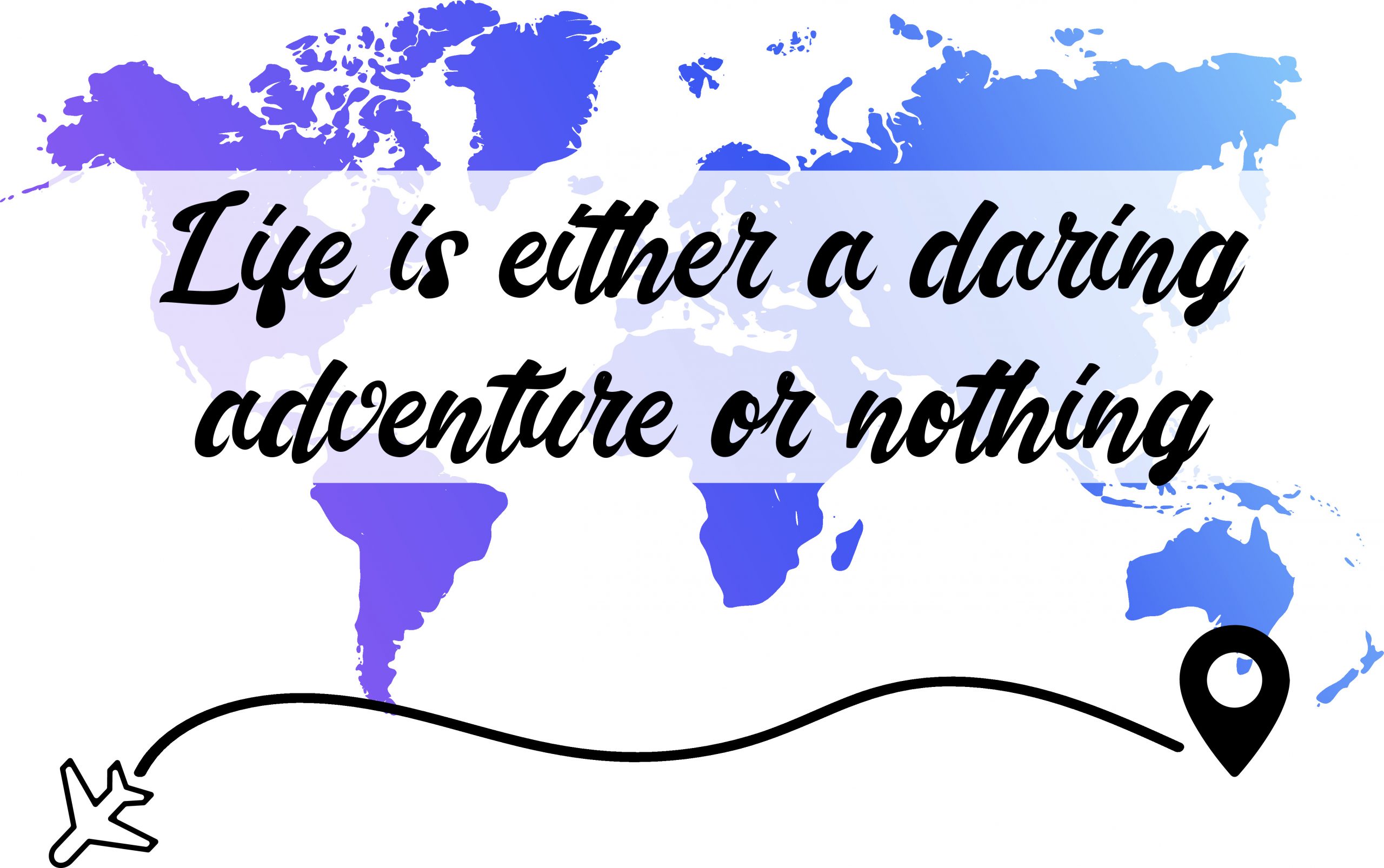
Creative Writing as a Business Strategy
Often as creatives, we want to stay in our creative worlds and not worry about the minutiae of the business side of things. It requires leaving our happy places and doing tedious things like accounting and spreadsheets. And worrying about money.
In some circles, I’ve heard people say that it’s “selling out” to worry about the money. We are artists not to be sullied by business.
I disagree. And if that’s been your thought, I ask you to consider the following:
Setting aside the obvious benefits of having more money - it is rather useful! - I’d like you to consider that sales and rankings are not just about money, but they are about the number of people who have been touched by your world, or influenced by your ideas and skills. It’s a number representing the change you are making on the earth - whether you write fiction or nonfiction.
So, even if your primary goal is other than making lots of cash, consider the business side of being an author to be one way of stewarding the gift you’ve been given and worked hard for so that it can make the biggest possible difference in the lives of others.
To do that, you’ll need to put on an administrative hat, and we have many articles in the pages that follow which will help you to do just that. Quickly and efficiently, so you can get back to creating the words that make the business possible.
And, if Mr. Impostor Syndrome rears his ugly head again, part two in our series will help you beat that negativity down once more.
We’re also hitting Preptober, so if you haven’t published yet, I hope you read Merri’s excellent article and consider getting ready for NaNoWriMo in November.
And, of course, snacks. What would we do without great snacks?
Celebrating your successes now and to come,

Reflect and Propel: Indie Authors Driving Success
How To Look Back To Move Ahead
When I was sixteen years old and had recently experienced my first real romantic heartbreak, my stepmother gave me a greeting card from illustrator Mary Englebreit which read, “Don’t look back, you’re not going that way.”
That beloved card found a home everywhere I’ve lived. The message resonated with me deeply, and I quoted it often to my daughters as they grew, updating it later with the kid-friendly, “Just Keep Swimming” from Disney’s Little Nemo. The message was the same. Don’t stop. Don’t look back. Persevere.
If you’re leaving a situation or experiencing a setback, I find it is best to pick yourself up, dust yourself off, and keep going. “If you’re going through hell, keep on going” as the saying goes.
Lately I’ve spent a lot of time with my project manager’s hat on, looking back at issues with a critical eye to see what’s worked, and what didn’t, so we can make better decisions.
I can do this for others with a little more ease. It's harder to do when it’s your own baby that you’re potentially calling ugly.
Except this time as I closed out and archived completed projects, it was less self-flagellation, It was a delighted surprise.
Look how far we’ve come. Look at all we’ve done. Look at who we’ve helped.
Sometimes when you’re so focused on moving forward you forget to celebrate the journey. Only by looking back can you see how far you’ve come.
There are lessons to be learned, too. That’s to be expected. But I’m learning to take those for what they are—ways to improve. Nothing more. I don’t assign blame or shame.
As indie authors whose creative souls rests in the words, it’s important that we keep going. Nothing sells the last book like the next book.
But I’m finding it’s equally important to intentionally stop and look back, too. Celebrate your wins. Take a quick victory lap. And be graciously critical when you see ways you could do better.
Then keep going. You may not be going back that way, but never forget how far you’ve come.
To your success,
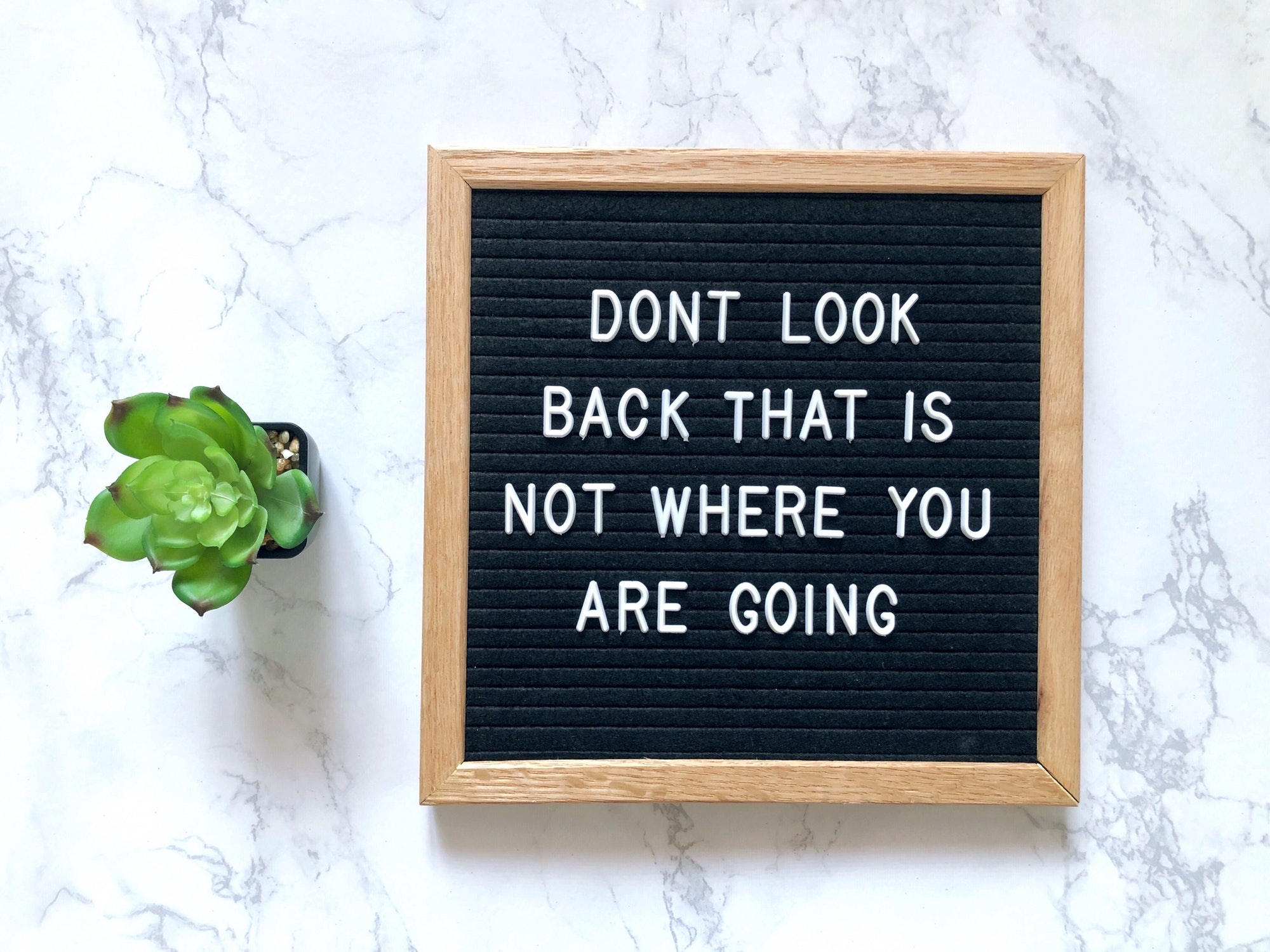
Reframe Imposter Syndrome for Indie Authors
Identifying
Individuals react and respond differently to their experience of imposter syndrome. Researchers found five common types; they are perfectionists, experts, soloists, natural geniuses, or superheroes. Try this quiz to see which one you identify with. What’s interesting is that no matter which type you are, the feelings you’re left with are the same: failure and shame.
Scientific research suggests other factors that can also influence your likelihood of feeling like an imposter, such as your family upbringing, personality traits, mental wellbeing, and your current environment.
Protecting
If we look at the Feelings Wheel, first developed in 1982 by Dr. Gloria Willcox, we can see that feelings of self doubt, inadequacy, and overwhelm all stem from the primary emotion of fear. It’s basically that reptilian part of your brain trying to protect you from saber-toothed tigers, or anything your brain perceives as dangerous.
It’s your brain’s way of keeping you safe.
But, realistically, writing a novel will not kill you. For indie authors, imposter syndrome might manifest as procrastination, extensive and unnecessary research, or spending a long time editing, or never feeling quite ready to hit that publish button.
Understanding
Journaling can be a very helpful way of getting to the root cause of your emotions. Perhaps start by noticing when you’re feeling like a fraud and asking questions such as “Where is this coming from?” Just getting your thoughts onto paper is often therapeutic.
Also, try debunking any negative thoughts by listing your achievements. Imposter syndrome can come from not feeling accomplished enough, so listing all your big (and small) achievements will go a long way to proving to yourself that you are good enough.

Discord Tips for Authors and Content Creators
Getting Started with Discord for Authors
Discord is a multi-purpose chat app made popular by gamers that includes text, audio, and video. Available on all platforms and devices, it has quickly expanded to be one of the premiere locations for interacting with authors and readers. But for those accustomed to other social media platforms, Discord has its own ecosphere and a unique set of expectations. Don’t worry, we’ve got you covered, and global conquest is just around the corner.
Fill out your profile.
It sounds basic, but as a future overlord, an author should fill it out. With 190 characters and six lines of visible text, this is where a user makes their mark. Unlike other ecosystems, Discord users are accustomed to clicking links that take them to websites. However, they are not fans of a hard sell, so avoid “Buy my book” links. Also include a photograph that reflects your tone and brand.
Network. Network. Network.
Thanks to its gaming origins, Discord is full of creative users. This includes cover artists, web designers, editors, podcasters, and of course, other authors. Jump into conversation with reckless abandon. An author might find their next cover designer or collaboration. Never fear asking questions on Discord. Somebody will gladly offer advice. Add them as “friends” and make a note of how you first met.
Collaborate with like-minded authors.
Users gravitate toward active servers. Unfortunately, few authors have enough rabid fans to reach this threshold. Servers like “Superhero-Fiction” rely on a cabal of authors within the genre, working together to create a theme-focused experience. This means no one author spends their entire day engaging users. It also creates a strong networking environment that results in the exchange of tips, promotional opportunities, and even a few drunk virtual pub nights.
Rules. Rules. Rules.
Create text and audio channels. As an owner, an author can write a short sentence or two about what belongs in each channel. Be specific. Be blunt. Unlike a general forum, channels in Discord each serve a distinct purpose. At the start, expect to crowd control and push conversations where they best fit. The more specific the description, the more users will police themselves. As the community grows, they’ll request new channels to help keep each on track. These are villains to promote down the road.
It’s about interaction, not promotion.
There are few ways to kill a server faster than using it as a dumping ground for advertising. Discord is the ultimate water cooler, and with the uptick in remote workers, it fills a need to connect with other humans in a work environment. What do you talk about with friends? Gossip? Your cat being a jerk? Anger over Firefly’s cancellation? Guess what, those topics will net reactions, conversations, and authentic interactions that advertising will never achieve.
Keep it fun.
World conquest is hard work, but this is where Discord finds its footing as an outstanding platform. While Discord remains a mostly text or voice-based platform, the gaming community that fostered its growth has made it a multimedia experience. The “Superhero-Fiction Authors’” server hosts monthly virtual pubs revolving around shop talk. Users can participate with video on or just voice, and the topics change depending on the attendees. They are also hosting communal superhero movie nights. As a genre-based server, their authors also have channels dedicated to writing sprints, curating music, and to procrastination (superhero-deathmatches, movie watch lists, and gamifying user interactions in a level-up system).
Have a staff.
If an author has a communal theme/genre server or their own, there is significant work involved. Connecting bots, ensuring rooms are clearly labeled and logically laid out, is the straightforward part of creating a Discord server. As people join, they need to be engaged and brought into the fold before they click elsewhere and ditch the community. This is where moderators for a server can be useful. Not only will they help police content and keep the peace, but they are also there to engage the server. These individuals should be frequent posters who keep conversations rolling and be willing to drop the hammer should the need arise.
Engage users.
If the conversation becomes one-sided, it gets dull and breeds apathy. Unlike Facebook or Twitter, where a creator can drop a comment and walk away, Discord is an active conversation. It requires give-and-take, like an in-person interaction. Ask users about themselves. What’s the weather like? Who are they reading? What’s their preferred way to crush your foes? But be prepared to continue the engagement. Discord pairs well with sprinting. Twenty minutes of grinding on a novel, and ten minutes chatting with the others in the server. Those ten-minute exchanges go a long way toward building a community.
Reward active users.
There are bots such as MEEP that gamify user interactions. Creating roles that show user participation invoke the competitive spirit. As users socialize, they receive “experience” that allows them to advance levels. The “Superhero-Fiction” server has users starting as “henchmen” and earning their way toward “Legendary Superhero.” Along with roles, active users can be granted permission to secret channels that could include advance reader copies, scene snippets or first crack at cover reveals.
Promote in places other than Facebook.
Many users who come to Discord have abandoned what they see as problematic platforms. Advertising a server on these platforms might net a few users, but it will never garner enough henchmen to execute plans of world domination. An author will want to turn to less frequented locations like Reddit and other Discord servers. Include direct links to the server in newsletters and discover a new audience to help solidify your role as ruler of the universe.
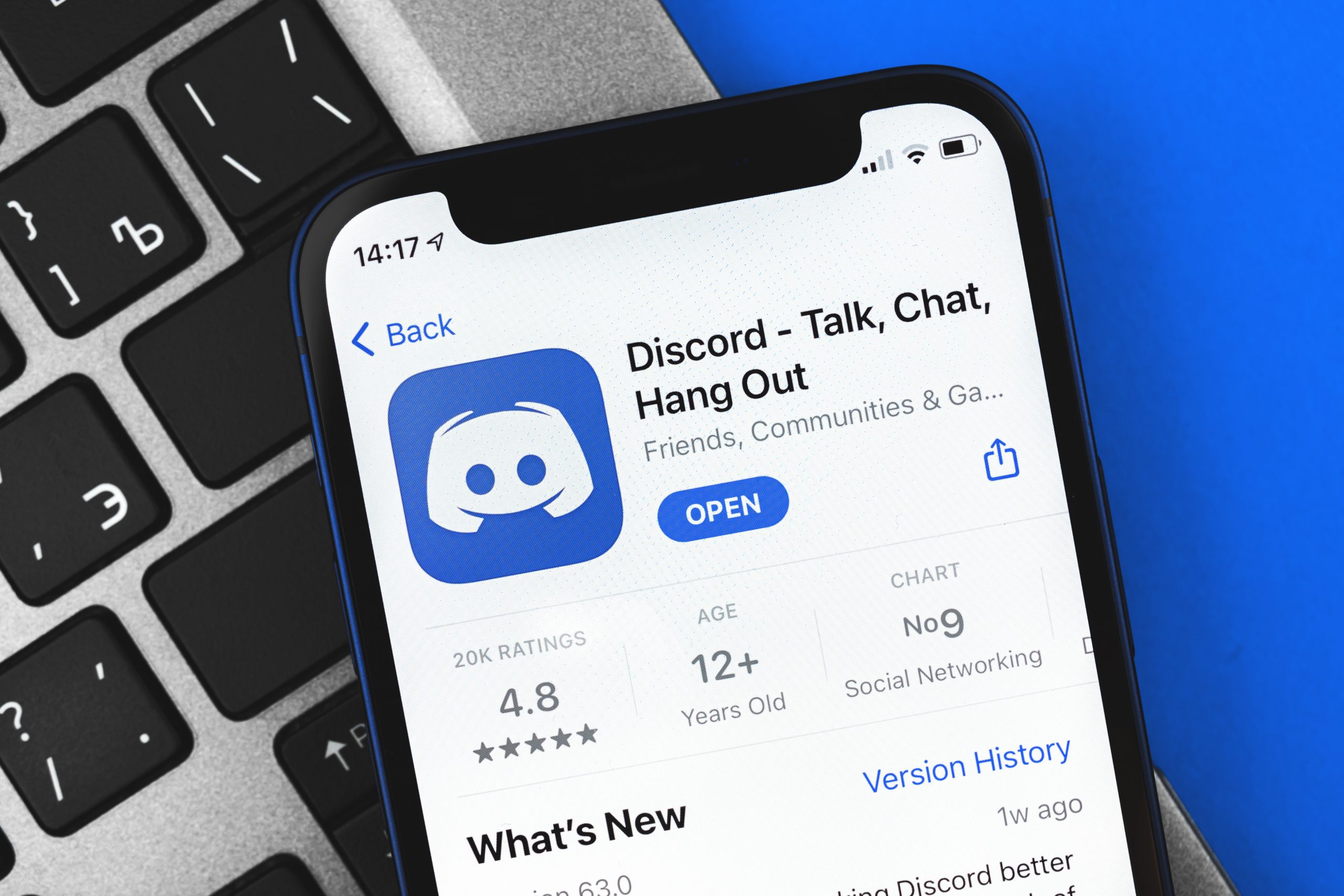
Boost Creativity: Healthy Snacks for Indie Authors
How to Eat Your Way to Creativity
What's the best fuel for a writer? For the 2021 Summer Olympics in Japan, 59-year-old Yoko Nishimura created a healthy salad to keep athletes in top form and combat the heat. She boiled edamame beans, added protein-rich noodles, fresh fruit, herbs, and vegetables.
Like athletes, authors need energy to win. Fruit and vegetable consumption increases creativity, keeps you healthy for the long term, and makes you happier. By now, you know indie publishing is a long game. Staving off depression and increasing productivity with healthy snacks is a triple win.
Can the snacks you choose help you meet your word-count goals? It might sound like a stretch, but a 2014 study suggests that healthy snacks light up different areas of your brain than high-calorie snacks. Eating more fruits and vegetables could prime your brain to be more reflective and future-focused about external rewards of all kinds. High-calorie snacks may make your impulsive side stronger.
Finishing a draft and running the indie publishing marathon require delayed gratification. What if your snack choice strengthened your ability to stay the course?
Let’s say you’re willing. Save your precious willpower for words by preparing healthy snacks ahead of time. Pomegranates definitely need advanced prep. Unless you want your keyboard to look like a murder weapon.
As a general guide, you need two servings of fruit and three servings of vegetables a day. Try thin slices of fruit (to feel like a cookie or a chip). Or any vegetable that strikes your fancy, washed and cut into writer-friendly shapes.
Cupcake papers or tiny bright-colored bowls with a ½ cup serving size make snacks fun and clean-up quick. Pamper your inner child to fill your creative well: the variety of colors and shapes can overflow into your stories. A vampire that munches garlic or Jerusalem artichokes? Here are a few ideas:
Cocktail tomatoes, snap peas, snacking cucumbers or peppers, tiny carrots, or mild radishes are tasty and convenient. Blueberries or other berries for anti-oxidant superpowers.
Almonds, pumpkin seeds, walnuts, sunflower seeds, preferably unsalted.
Air-popped popcorn.
Water reduces fatigue and wakes you up.
Once your snacks are packed, consider intervals. Try a timed-sprint to get words, followed by a snack break. Your subconscious will have a chance to work with you.
What makes you light up and feel good for the long term? Experiment for yourself. Then stock up on your favorites, and go for the gold!

Outsource to Boost Efficiency and Prevent Author Burnout
When you hear the term “Outsourcing,” what comes to mind? You are most likely familiar with the concept of hiring external talent for editing and cover design. For most indie authors, that’s as far as they go. Partly because at the beginning of their author journey, they will likely bootstrap their careers. Money is scarce, and most authors will take on admin and marketing tasks themselves.
But as you build your business, the focus shifts from saving money to making the most efficient use of your time. Burnout is a constant threat to busy authors. Each little task may seem like just a drop in the bucket, but the drops add up until soon your bucket is overflowing. Outsourcing tasks such as blogging, advertising, creating your blurbs, and organizing newsletter swaps can free up your time to do what only you can do: write a great first draft.
How do you identify areas you could outsource?
First, make a list of all the tasks that are part of your author business.
Then examine them and decide whether they are what you should spend your valuable time on. To help you, you could sort them into four buckets.
The Bucket of Lost Causes contains tasks you’re not good at. Maybe you have no talent for creating social media graphics. Maybe you would be lost without a professional cover designer or editor. These are the jobs you must outsource or risk hurting your author business.
The Bucket of Mediocrity is for jobs you can do but shouldn’t. You take too long, or your results are passable but underwhelming.
The Bucket of Competence holds tasks you enjoy doing and would hate to give up. But on closer inspection, they might not help you with your core business. For example, you are fluent in another language and love translating your books, but this comes at the cost of creating new books in your target market.
The Bucket of Writerly Bliss is for the things only you can do. Nobody can write your first draft because that is where your voice and personality shine.
Once you’ve sorted the components of your author business into the appropriate buckets, consider which ones you can outsource. The first bucket is easy. If you are short on cash, you can start with the task you dislike most and add to the list. Ideally, at the end of the process, you want to spend most of your time on the Bucket of Writerly Bliss.
Some Tasks You May Not Have Considered for Outsourcing
Alpha and Beta Readers
You’re writing a first draft in a new genre. But you aren’t sure how your audience will react. The solution? Reaching out to readers who will provide feedback, either through your newsletter and social media, or by finding websites offering this service.
Alpha Readers will look at the overall shape of your novel, much like a developmental editor would.
Beta Readers go more in depth and look for inconsistencies in character, setting, and plot. They will also find typos if they’ve got eagle eyes.
Which tasks are easy to outsource?
For many writers, marketing their work is not their favorite task. However, did you know you can outsource many elements of selling your books, freeing you up to do what you do best?
Paid Newsletters
Listing your upcoming book with professional newsletters is a great way to help your book launch. You can either do this yourself, or you can hire a project manager.
A project manager will probably have negotiated a preferential rate with the newsletter sites. They can save you time by taking on the arduous task of contacting each website and completing their webforms.
Typically, you can book packages to cater to all price levels, ranging from several hundred dollars to potentially thousands if other services, such as Facebook advertising, are included.
Social Media
Most authors would consider maintaining a presence on social media platforms as essential for their business. It aids discoverability and direct communication with readers. It’s a labor-intensive and often repetitive task. Extracting teaser quotes from your books, finding and formatting interesting graphics, and uploading them to your various platforms takes time.
Where do you find contractors or even permanent assistants?
Many authors, especially when they first consider outsourcing, ask their friends and other authors through social media.
According to Fantasy and LitRPG writer Tao Wong, the advantage of hiring fellow writers is that they already understand the business. They know how to upload a manuscript to the various platforms and require minimal training.
The disadvantage is that should they get busy, they will understandably prioritize their own author business and quit.
Another possibility is to go through a portal that offers outsourcing services such as Reedsy, Upwork, or Fiverr. Upwork and Fiverr list contractors who are not necessarily familiar with the author business. They may require more training, but offer the opportunity to build a long-term relationship that will grow alongside your success.
Tao has also hired full-time assistants for his author business. He cautions to research your obligations as an employer to avoid falling foul of regulations.
In the USA, the Department of Labor (DOL) will provide you with information. But do your own research as requirements differ from country to country. Seek legal advice before employing assistants on a full-time basis.
Points to consider
In his own words, Tao is “horrible at details.” That was initially the main reason he hired a Publishing Assistant. Over time, his outsourcing practice evolved. From hiring people to do his formatting, he now has full-time and contract staff who help him move his business to the next level. He calls his Hungarian contractor “a godsend.”
One of the biggest challenges for writers is the fear of losing control when tasking outsiders with their business. It is true that in order to upload a manuscript, the contractor will gain access to your earnings information.
Tao mitigates that concern by drafting employment contracts with NDAs. But he’s also keenly aware that these documents may not be easily enforceable in separate jurisdictions. To him, trust is everything in his professional relationship with contractors. His advice is, “Walk away if you feel squirrely about somebody.”
In terms of day-to-day operation, Tao uses Trello to allow his team to work through tasks and Discord for ad hoc communication. To control access to various passwords, Tao uses LastPass.
Tao trains his assistants through Zoom video recordings of previous training sessions, and he documents his business tasks meticulously. For tasks that only need to be done every few months, it’s a great idea to have the details on paper to remind contractors of the details.
As a writer, you will face this decision at some stage in your career: will you limit your growth because you sacrifice writing time for administrative, marketing, and publishing tasks? Or will you take the leap into handing off repetitive tasks to somebody else? Look at your buckets and decide what’s best for your author career.
Eventually, outsourcing may well be the engine that drives your business forward.

Indie Publisher Success: Dakota & Danielle Krout's Story
Meet the couple behind Mountaindale Press, the indie publisher shaping the GameLit genre
Dr. Danielle and Dakota Krout work side by side to run their independent publishing company—but only figuratively. With Danielle as the CEO and Dakota as the president and an author for Mountaindale Press, both work full time to run the company, primarily from their home offices.
But those offices are on opposite ends of the house, on separate floors, Danielle says, “so that I don’t bother him as much.”
“And I don’t bother her,” Dakota says.
“Well, no, because I don’t get bothered,” she interjects.
Dakota pauses to look at her. “Yes, you do,” he says, and she laughs.
Their playful banter perfectly captures their relationship, both personal and professional. The two have been married for eight years and business partners for three, since Mountaindale Press, known primarily for its LitRPG and GameLit titles, was founded in 2018. In that time, the company has grown to include a rotating cast of around twelve to fifteen authors at a time and worked regularly with close to fifty people serving in other roles—as contractors, cover artists, narrators, and editors. But Mountaindale Press’ success hasn’t come without effort.
It was “a lot of trial and error, a lot of legwork,” Danielle says. And though the two started their independent publishing journey from the ground up on their own, Dakota and Danielle are the first to admit they’ve relied on plenty of resources and put in hours of research to develop the strategies that have guided them along the way.
An unexpected origin story
The Krouts’ foray into independent publishing truly started about two years before they founded Mountaindale Press, when Dakota self-published his first book. It was an adventure that began, at least in part, Danielle says, out of spite, when one of Dakota’s college professors criticized his writing ability.
“He had an … English professor at our college say something like, ‘No one will ever read what you write,’” Danielle says. “So then he was basically just like, ‘I’ll show her.’”
“We got into a tiff about how creative writing is about being creative, essentially,” Dakota says. Dakota had already nearly finished his first novel before taking the college course but found himself caught in what he called an “editing death spiral,” constantly changing the manuscript to make it perfect. When he’d enrolled in the class initially, he’d hoped it would help him decide whether his writing was “good enough.” Instead, his professor’s words gave him the motivation he needed to ignore the tiny errors in his work and hit “publish.”
“For me, it was a matter of getting that [book] out,” Dakota says. “And even though I was uncomfortable, I really felt that it was going to be either never or now, you know. I will never do it, or I'll do it right now.”
Initially, the news of Dakota self-publishing his book had surprised Danielle. But the even greater surprise came with the response it received from readers, who bought over ten thousand copies of the novel in the first five months. Although neither of them had realized it, Dakota’s book, Dungeon Born, slotted itself easily into a newly emerging Science Fiction/Fantasy subgenre. Known as Dungeon Core, it requires at least one character be a sentient dungeon, like those often incorporated into video games or roleplay games such as Dungeons & Dragons, and it exists under the larger umbrella of GameLit stories—narratives that involve a magic system structured like that of a video game.
And just as those dungeons often do to any travelers who wander too close, the fans of the genre who found Dakota’s book devoured it.
The response spurred him to capitalize on the opportunity he saw. He and Danielle worked to edit Dungeon Born and redesign the cover, and Dakota began planning how to recreate his success. “When I saw that other people were talking about it as if it was already part of the genre, I started looking into the genre more,” he says. “Something that's really, really helped me a lot in my author career is I have an incredibly fast reading speed. ... So I can read a whole ton of these books and get a really solid feel for what it is that other people like and what I like and kind of where those meet.”
By November 2017, Dakota had published his next two books, and by March of the next year, he was making enough money to quit his job and write full time. That month, he also published the first book of his second series, The Completionist Chronicles, this time aiming to “hit dead center of the main genre of LitRPG,” another subgenre under the GameLit classification.
As the two learned more about the world of publishing and marketing, they decided they wanted to use their knowledge to help other authors achieve the same success. The two soon founded their press, and by October 2018, almost exactly two years after Dakota’s first book was published on Amazon, the company released its first book under the Mountaindale Press name.
On a roll
Three years later, it’s safe to say Dakota and Danielle have fine-tuned their system. This year, Mountaindale Press has published a book every two to three weeks on average. Dakota still writes, and his titles have appeared in several top sellers lists: in Audible’s top 10 audiobooks of the week, Amazon’s top 15 bestsellers of the week and Audible’s top fantasy picks for 2017.
But there have been road bumps along the way too.
“It’s just sort of a funny story where Dakota had this idea that we should start our own company, and I was like, ‘OK, that's great.’ Next thing I know, it happened, and then he's like, ‘What do we do now?’ I don't know!” Danielle says. “The whole experience has been sort of being tossed into the deep end.”
Neither Dakota nor Danielle had any background in publishing before starting Mountaindale Press—Dakota was in the military and has a degree in computer science, and Danielle earned her PhD in pharmacology. Much of the company’s foundations were built on hours of research and learning-by-doing, and the two often relied on resources like Facebook’s “20BooksTo50K” group and “Self Publishing Formula” page, online forums, and publishing conferences, where they could build relationships within the independent publishing world in person. Danielle says it often surprised her how forthcoming people were with advice and encouragement and how many of the couple’s business relationships became friendships outside of work.
Of course, the coronavirus pandemic put a damper on some of that, but even 2020’s slowdown became a learning experience. Rather than taking on any new authors, the two worked on polishing the company’s current workflow.
“Part of our focus is to make sure that there is no single point of failure, that our model, that our business can continue,” Danielle says.
“If someone is no longer with us, for whatever reason, someone else has to fill that position until they come back,” Dakota adds. “Usually that was one of us who can then step in that role. But it's easier when you have a document that says, ‘Step one, do this. Step two, do this.’”
The pair’s workdays are still fairly structured. In their separate home offices, Danielle ensures manuscripts are moving through the production pipeline correctly and manages release and marketing plans, and Dakota spends Monday through Thursday each week writing, often using music to get into the right headspace. “I will sometimes be standing, typing, music blasting behind me, and dancing, kind of grooving to the beat,” Dakota says. (It’s that part of his process, he explains, that necessitated the separate offices.) Fridays are for miscellaneous administrative work to provide a break from writing.
And as time has gone on, the two have even found the skills from their old jobs coming back into play. Dakota became diligent about maintaining records and reading contracts from his time in the Army—practices he uses frequently at Mountaindale Press. His knowledge of spreadsheets, courtesy of his computer science background, helps him keep track of the hard math involved in his novels’ magic systems. And Danielle’s research skills helped kickstart their publishing careers.
“I would say all experience is useful somewhere,” Dakota says.
The journey continues
With as far as Mountaindale Press has come in the past few years, Dakota and Danielle still have plans for its growth moving forward. In 2022, the couple hopes to begin directly selling books rather than relying solely on third parties, which would provide more control over pricing and increase revenue for the company—and its authors. They’ve also started finding new revenue streams through merchandising, with graphic novels, video games, and board games eventually coming to the table.
All of it, Danielle says, is to help achieve the pair’s ultimate goal for Mountaindale Press: to allow its authors to turn writing into their career.
“Mostly, our goal is that we want to help other authors succeed; we want to see them become full-time authors,” she says.
The concept requires a team effort, Dakota adds, and for authors to be receptive to suggestions and willing to work with the company to reach that point. Sometimes, that means writing what’s expected of the book’s chosen genre instead of “writing for yourself and writing what’s in your head.”
The two say they realize independent publishing isn’t for everyone. It’s why they often recommend new authors explore self-publishing options first—after all, it’s how Dakota got his start. The big question authors must answer, Danielle says, is what they want their focus to be. “Do you want to focus on writing by itself? Then a publisher might be a good option for you. But if you are someone who would rather be in control from start to finish, self-publishing, all the way.”
No matter which option authors choose, however, Dakota says finding success in the publishing world isn’t about luck; it takes time, effort and dedication.
“It’s not easy; that’s the whole point. You go into it with the mindset that this is your career. There are no safety nets,” he says. “You put one hundred percent into it, and you put your heart into it, and you run.”
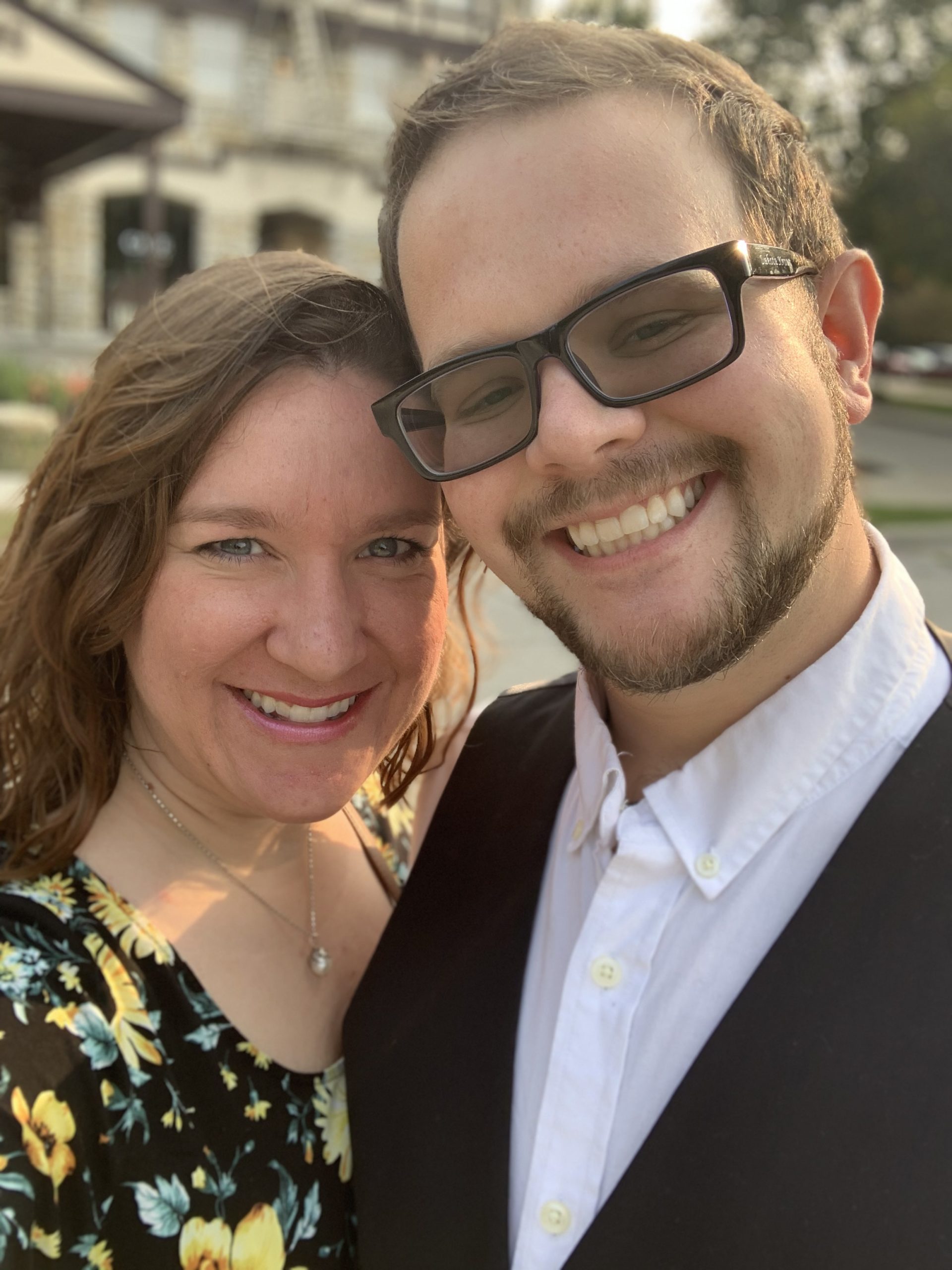
Create Print Wrap Covers: Indie Author's Essential Guide
Understanding the Essentials of Book Printing in Self-Publishing
There’s nothing quite like holding your book in your hands—an actual printed copy whose pages you can flip. For fiction authors choosing exclusivity for e-books through Kindle Unlimited, print is an easy way to dip your toe into the wide marketplace without losing those page reads. For nonfiction and children’s book authors, print often makes up a large portion of sales. Brian Sanderson made the news recently with his nearly $6.8 million Kickstarter featuring premium leather bound editions of The Way of Kings as a ten-year anniversary special event. While some may say the print market is waning, evidence says print is very much alive and kicking.
In this article, we’ll walk through creating full wraps for paperback and hardback editions through KDP’s and Ingram Spark’s Print on Demand (POD) services. The process is generally similar for local presses; some details may vary, but work with them to understand their specs.
While this article assumes you are creating the cover yourself, you may find it helpful to understand the process when you use a designer.
Basic Template Setup
One thing to keep in mind throughout the entire process is this: It’s easier to make designs smaller than it is to make them bigger. Especially if you plan to eventually add hardcover or audio from these same templates, it is recommended that you start your design process with a canvas that is large enough to accommodate future plans. If you’re working with a designer, they may appreciate that heads up. It is far easier to crop for the e-book than add on the spine or back cover for print.
Understanding Dimensions and Length
When you see dimensions, such as 6x9, understand for print this is the dimension of the front and back cover once trimmed. Be sure you consider the bleed and spine width in your final template size. The spine size changes depending on the length of the book’s word count and paper type. If you’re not sure of the final formatting word count of the book yet, overestimate the number of pages, because again, it’s easier to make things smaller, rather than larger. As a general rule of thumb, 400 cream pages equates to 1 inch, which is typically what many designers start with. For ease of math, use ½” for bleeds for paperback and increase to 1” for hardback.
As shown here, the height of the canvas is 9+.5+.5 or 10 inches. The width of the canvas is 6+6+1+.5+.5 or 14 inches.
Note: for audio add 1 inch to the width on the right. Audio book covers are square, so add additional room to the right of the front cover to accommodate that without having to redo your entire design.
Once you have your canvas set, place guides on the inside of the bleeds and the edges of the front, spine, and back. The front of the book is on the right, and the back of the book is on the left. If you open up a book you have around the house and lay it open on the table, you’ll see a good example.
The last critical dimension setting is “dots per inch/pixels per inch” or dpi/ppi. For optimal printing, set your template to 300 dpi/ppi.
CMYK or RGB?
RGB is the term for color that is most often used online. CMYK is most often associated with print. CMYK does not have as wide a range of colors as RGB, and some colors, such as dark purple, don’t read the same in both. You can convert CMYK to RGB with minimal alterations, but that’s not always the case in the other direction.
Pro Tip: If you start your cover in the CMYK space, you’ll be happier with the results in the long term.
Barcodes & ISBN Numbers
Looking at KDP’s template, you will see a space for the barcode that you leave clear of any important elements such as text. IngramSpark requires your ISBN number and includes the barcode on the template when you receive it.
Pro Tip: You never need to purchase a barcode. There are several free barcode generators available. You can read more in the “FAQs for ISBNs” article in August’s issue. One recommended tool is www.bookow.com. If you’re using IngramSpark, you can use the barcode from their template on your cover for KDP.
Bleeds & Folds
On the KDP template, the pink areas are what they may cut off or fold. On the Ingram Spark template, the blue areas are what they may cut off or fold. No text can be in those areas or they will refuse it, and send it back with errors. Keep your text well inside those lines for optimal results.
Bleed is used for interiors and covers, and for other printed items. It is a term for a small amount of border outside the dimensions that the item will be trimmed to. It is to ensure that the image or design goes to the edge of the page and doesn’t get cut off a hair short, leaving an odd white line. For KDP and IS, you need to completely cover the bleed area or your file may be flagged.
Pro Tip: Continue your design beyond the edges of the outside bleed of the template to ensure it is completely covered.
Create your design
You can now create your design. Focus on the portion of the design that will be the front cover, (remembering you can later crop that for the ebook version). When possible, continue your design across the full width of your canvas. For tips on how to create an impressive design, see “A Matter of Trust - Making Your Cover Match Your Genre” article in May’s issue.
Use one template to create your design. Designers report that they typically use the KDP template, finding it easier to let them place the barcode. However, if you want to place the barcode specifically, then start with the Ingram Spark template.
Pro Tip: If your design is continuous across the width of the canvas versus having a hard line at the spine, then the variances of the POD printing process will be minimized. Notice the pink and blue areas on the templates; this is the tolerance for where the spine may be folded. They will not guarantee a precise fold or cut. It’s the nature of POD to be less precise than high volume off-set printing.
Crop and export
Paperback
Once you are pleased with your design, then you can overlay KDP’s PNG over your design as a final check if you haven’t built your cover on their template. Once you’ve ensured the design fits inside the overlay, delete or hide the PNG template. Export or save as a PDF and upload.
If you’re using the Ingram Spark template, make sure all the pink or blue is completely covered. There is sometimes a minimal difference between the requirements of the two platforms.
Pro Tip: Export as PDF/X-1a:2001 when possible.
Hardback
The templates work similarly. You may need to adjust the text as the fold area and the spine may be larger. If your background was set large enough, this is a very easy adjustment.
Although there is a bit more complexity with a full wrap design, with the templates provided by KDP and Ingram Spark, this is a task that you can do easily, allowing you to expand your author empire with print on demand. Take each step at a time and work your way through the process, and you’ll soon be able to hold your book in your hands and flip through its pages.
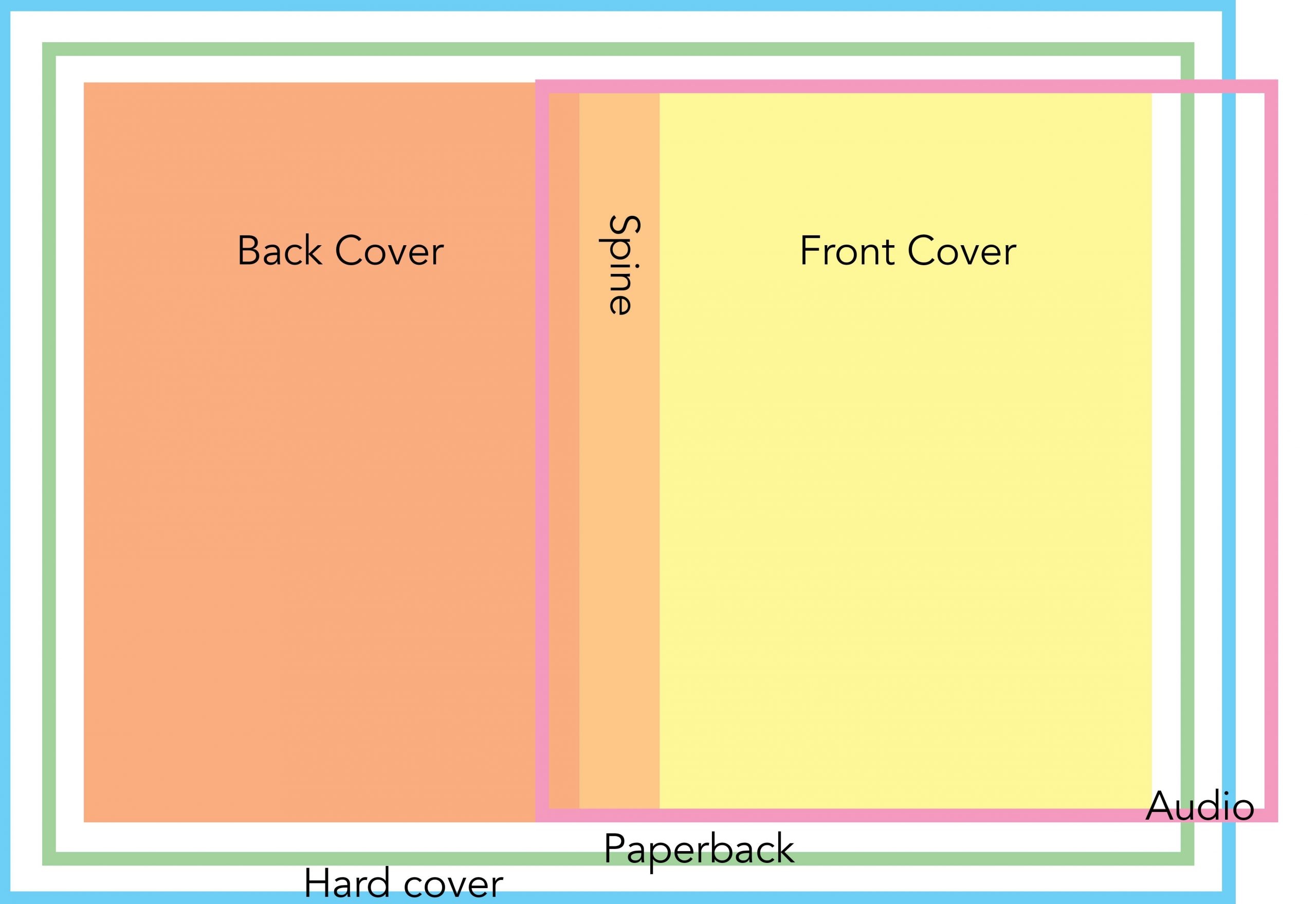
Work-Life Balance Tips for Writers: Write Now Podcast
Trying to achieve a healthy work-life-writing balance?
Then check out Sarah Rhea Werner’s weekly Write Now podcast. Werner says it “gives you the encouragement, honest advice, and inspiration you need to balance work and life, pursue your passion, and write.” She is an award-winning podcaster and writer, national speaker, and creativity consultant.
Listen Here
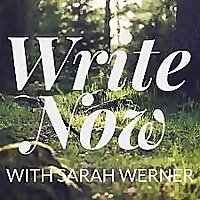
Boost Writing Skills with Grammar Girl's Podcast Tips
Grammar Girl Podcast Highlights
Grammar Girl covers everything from punctuation and grammar to style and voice in her award-winning weekly podcast. The typical episode runs less than 15 minutes. And it’s fun. She shares her writing advice in three short nuggets: a quick and dirty tip, a hearty middle, and a closing snippet.
Listen Here
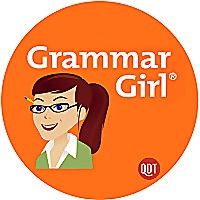
Kids Book Club Podcast Insights for Indie Authors
Book Club for Kids
The place where young readers meet to talk about books. The show includes a celebrity reader and an interview with the author. The host is award winning public radio journalist Kitty Felde. Book Club won the California Library Association Technology Award and the DC Mayor's Award for Excellence in the Humanities. Named one of the top 10 podcasts for kids by THE TIMES of London.
Listen Here
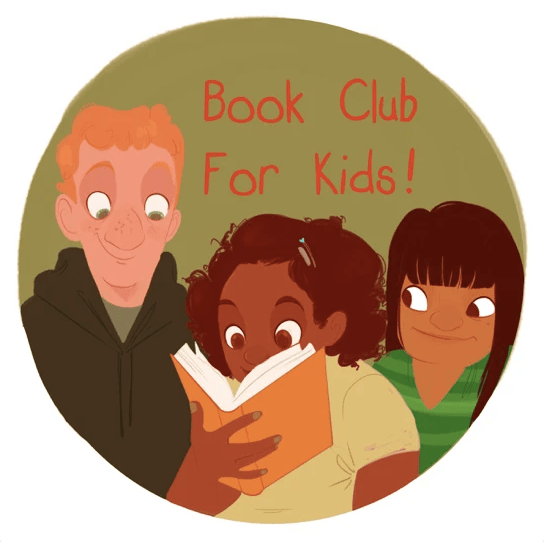
New Apps Transform Indie Author Publishing
What You Can Expect
There are few things in life as personally painful as a breakup. When you're a businessperson, you'll learn eventually that changing your vendors and contractors can feel much the same way. Especially if you've worked with them for a long period or if they're friends, or worse, family. And trust me, it doesn't get easier or feel any better.
Recently, we had to take a hard look at the company that developed our apps and we concluded we had to make a change. We didn't make it lightly and, while frustrated, it wasn't a snap decision.
Simply put, continuing to work with them meant frustrated readers and more lost money.
We Had a History of Success With Them
We chose them initially because I'd worked with them in another magazine four years ago, and I knew their interface well. In the last four years, the interface they used had matured little, but they had added on some interesting features — magazine business coaching and a mastermind group.
After a rocky first month, we thought we had the bugs worked out and moved past some "unprecedented" events — server glitches, issues with security keys, and the usual developer bugs we knew to expect. We built in extra time to be sure our readers weren't affected.
And then came month two, and a different "unprecedented" (there's that word again) event. Followed by another one in months three and four. Issue number five launched on the app without a hitch and I sent a note with a virtual high-five, telling them they hear me frustrated every month and I wanted to acknowledge the positive.
Which then brought us to month six. And a new massive issue with the iOS version of the app.
When I was again told it was unprecedented, I knew we weren't speaking the same language anymore, and we needed a change fast.
We Built It Ourselves From Scratch
And so, we've built two new apps and they're now available in the Apple App Store and on Google Play.
We hoped we wouldn't need to ask you to download a new app, but unfortunately, we do. They're available here:
Apple App Store
Google Play Store
Here's the good news. While we built these quickly, the new apps have the same functionality as before, and more.
Your login credentials for the website are now integrated (this is a BIG upgrade)
You can now bookmark pages you like and read articles later
New thumbnails view lets you navigate and read articles quicker
The interactive format give you easier access to bonus content and videos
On the Roadmap
Because we have full in-house control of the apps, we can dedicate resources to building our apps to serve you, an indie author, rather than waiting for stock updates built for the magazines industry. In the next few months we plan to add:
Indie Author News Widget
Event Calendar with notifications
We'll share more details as we build them out. Our primary focus is ensuring that our readers can download and use the new apps before we de-list the original apps.
Changes are challenging, but overall we see this as a positive. We'll be able to create something that helps the indie author community specifically, and we'll own and control the production schedule and features set. Thanks for helping us make lemonade from lemons, and please know we appreciate your readership.
View a Short 3 Minute Video Tour of the New App Features
Watch the video

💡
The Rest of This Issue is for Paid Subscribers Only
Get more than just tips—get real results. As a paid subscriber, you'll unlock the full-color issue, VIP access to webinars and training, discounts on software and tools, and a community to support your journey.
Get more than just tips—get real results. As a paid subscriber, you'll unlock the full-color issue, VIP access to webinars and training, discounts on software and tools, and a community to support your journey.

